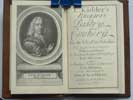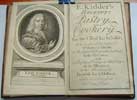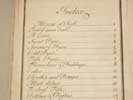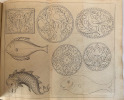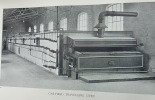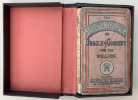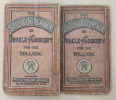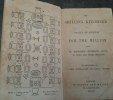A Collection of above three hundred receipts in cookery, physick and surgery;
For the Use of all Good Wives, Tender Mothers, and Careful Nurses. By several hands. LONDON, Printed for RICHARD WILKIN, at the King's Head in St. Paul's Church-yard. MDCCXIV.
FIRST EDITION 1714. 8vo. Pp. Half title. Title page. 12. 1-218. [219-232] Full contemporary two-tone dark brown calf boards with nice polished patina. Sympathetically re-backed dark brown calf spine with raised bands and blind tooling. No labels. Pages evenly browned throughout, with some staining, but not affecting text. Overall a good copy of the very rare first.
- Mary Kettilby's first edition of 1714 has the first printed recipe for "modern" orange marmalade. Interestingly it was the Scots who moved marmalade to the breakfast table, complete with finely cut peels, or chips, to use the Scottish term. There it joined scones, sausages, game pies, trout, roast beef and sometimes a haunch of venison on the sideboard. The traditional Scottish breakfast was certainly not for the meek or those of delicate constitution or stomach. Not until well into the 19th century did the English follow the Scottish example and abandon the eating of marmalade in the evening (originally a post-dinner digestive rather than a jam). Mrs Kettilby's formula called for whole oranges, lemon juice and sugar. A contemporary recipe for home-made marmalade, that of Shaun Hill, owner of the Michelin two-star Merchant House in Shropshire, differs only slightly, using whole lemons along with the oranges and sugar. "Homemade marmalade", he says, "is superior to anything you can buy", and he made twenty cases of Seville oranges into marmalade each January when he cooked at Gidleigh Park in Chagford, Devon, a prominent country-house hotel. I should imagine there would not be a lot of difference in taste between Hill's recipe and that of Kettilby's due to the presumed consistent taste of oranges over the centuries.




click on image to enlarge

Antiquarian category
ref number:
10916 








